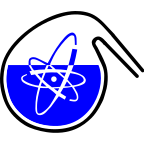Speaker
Description
Adsorption of uranium(IV) by pine needles prior and after carbonization and following surface oxidation has been investigated by batch-type experiments as a function of various parameters (e.g. pH, [U(VI)]ο, I, T), and the adsorbents were characterized by FTIR and SEM measurements. The experimental data have been well fitted by the Langmuir adsorption isotherm and the highest adsorption efficiency is observed for the carbonized and surface oxidized material (qmax= 1.15 mol·kg-1 at pH 3), followed by the non-treated pine needles (qmax= 0.28 mol·kg-1 at pH 3) and the carbonized material (qmax= 0.12 mol·kg-1 at pH 3). The highest U(VI) adsorption observed after surface oxidation of the carbonized material is attributed to the presence of carboxylic moieties, which possess increased affinity for the U(VI) cations and form inner-sphere surface complexes.

